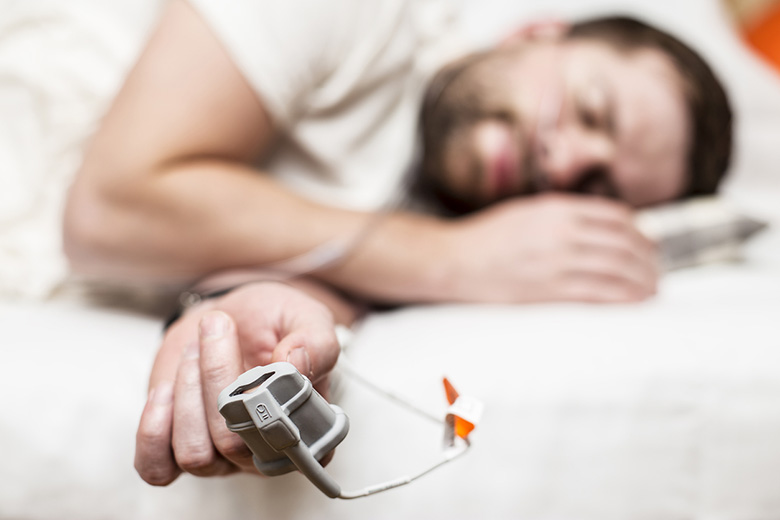Navigating a Sleepless Night: What to Expect During a Sleep Study
Sleep studies play a crucial role in diagnosing sleep disorders. During a sleep study, also known as polysomnography, technicians monitor your brainwaves, muscle activity, breathing patterns, and blood oxygen levels while you sleep. This information helps doctors identify sleep disturbances like sleep apnea, insomnia, or restless leg syndrome. However, the prospect of sleeping in an unfamiliar environment with sensors attached can be nerve-wracking, and sometimes, sleep just doesn’t come easily. This comprehensive guide explores what to expect during a sleep study, offers tips for promoting sleep in a lab setting, and explains what happens if you can’t fall asleep or have a restless night.
Demystifying the Process: What Happens During a Sleep Study
A sleep study typically takes place in a sleep lab, a specialized room designed for comfort and monitoring. Here’s a breakdown of what to expect:
- Pre-Study Consultation: You’ll meet with a sleep specialist to discuss your sleep concerns, medical history, and medications. They will explain the sleep study process and answer any questions you might have.
- Arrival at the Sleep Lab: On the night of the study, you’ll arrive at the sleep lab and be shown to your room. The technician will explain the monitoring process and attach painless sensors to your scalp, face, chest, legs, and finger.
- Lights Out, Monitoring On: Once settled in, the lights will be dimmed, and the technician will leave the room to monitor you remotely. You’ll be encouraged to relax and try to sleep as you normally would at home.
- Morning Wrap-Up: In the morning, the technician will wake you up, remove the sensors, and ask you about your sleep experience.
Promoting Sleep in the Lab: Tips for a Restful Night
While sleeping in an unfamiliar environment might be challenging, here are some tips to promote sleep during your study:
- Maintain Your Sleep Routine: As much as possible, stick to your usual bedtime and wake-up times, even on the night of the study.
- Light Dinner: Avoid heavy meals before the study. Opt for a light, healthy dinner a few hours beforehand.
- Relaxing Activities: Bring a book, listen to calming music, or practice relaxation techniques like deep breathing or meditation before bedtime.
- Familiar Comforts: Pack pajamas and a pillow you use at home to create a sense of familiarity in the sleep lab environment.
- Open Communication: Let the technician know if you’re uncomfortable or have any questions throughout the night.
Facing a Sleepless Night: What Happens if You Can’t Sleep During a Sleep Study
Even with the best preparation, sometimes sleep eludes us. Here’s what to expect if you have difficulty sleeping during your sleep study:
- No Pressure: There’s no pressure to perform! The technicians understand that sleeping in a new environment can be challenging.
- Valuable Data: Even if you don’t sleep well, the study can still collect valuable data about your brainwaves, muscle activity, and breathing patterns. This information can be crucial for diagnosing sleep disorders.
- Rescheduling Option: In some cases, the sleep specialist might recommend rescheduling the study for another night.
Beyond the Sleepless Night: What Happens After the Study
After the study, the sleep technician will collect the data and prepare a report for the sleep specialist. Here’s what to expect next:
- Review and Diagnosis: The sleep specialist will analyze the data from your sleep study and discuss the findings with you. They will use this information to diagnose any sleep disorders you might have.
- Treatment Options: If a sleep disorder is diagnosed, the specialist will discuss treatment options, which might include lifestyle modifications, medication, or CPAP therapy (for sleep apnea).
- Follow-Up Appointments: Depending on the diagnosis and treatment plan, you might need follow-up appointments to monitor your progress.
FAQ on Sleep Studies
- Is a sleep study painful?
No, a sleep study is not painful. The sensors attached to your body are painless and non-invasive.
- What should I wear to a sleep study?
Wear comfortable pajamas and loose-fitting clothing that allows for easy sensor placement. Avoid wearing clothes with metal buttons or zippers, as these can interfere with the recordings.
- What if I have trouble staying still while sleeping?
Some movement is normal during sleep. The technicians are aware of this and will be able to distinguish between normal movements and potential sleep disturbances.
- Can I eat or drink anything during the sleep study?
You might be offered a light snack or water before bedtime.






More Stories
Is there a lifetime limit on epidural steroid injection?
What is Section 20 of the Motor Accident Insurance Act (Queensland)?
Where to Watch USMNT vs Jamaica National Football Team